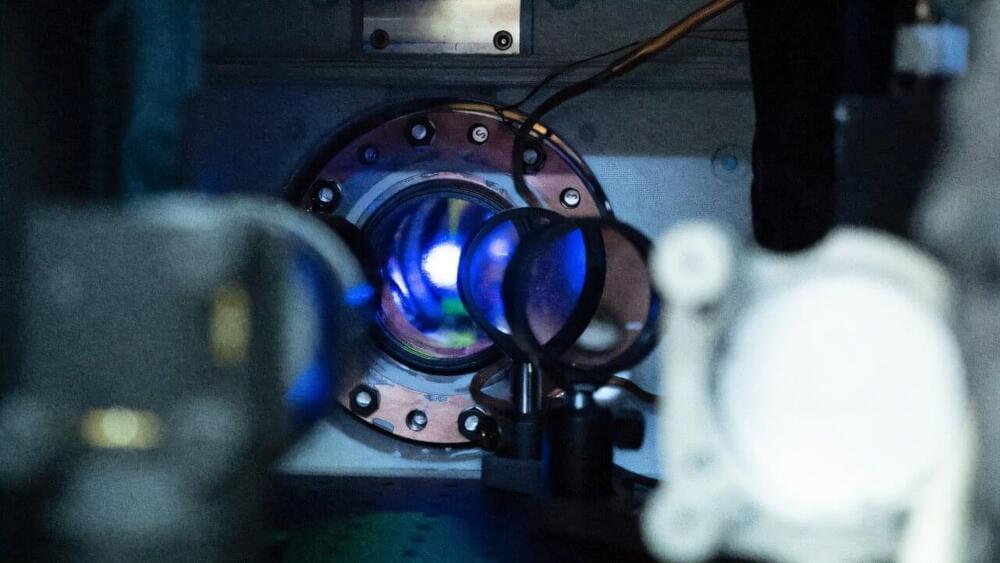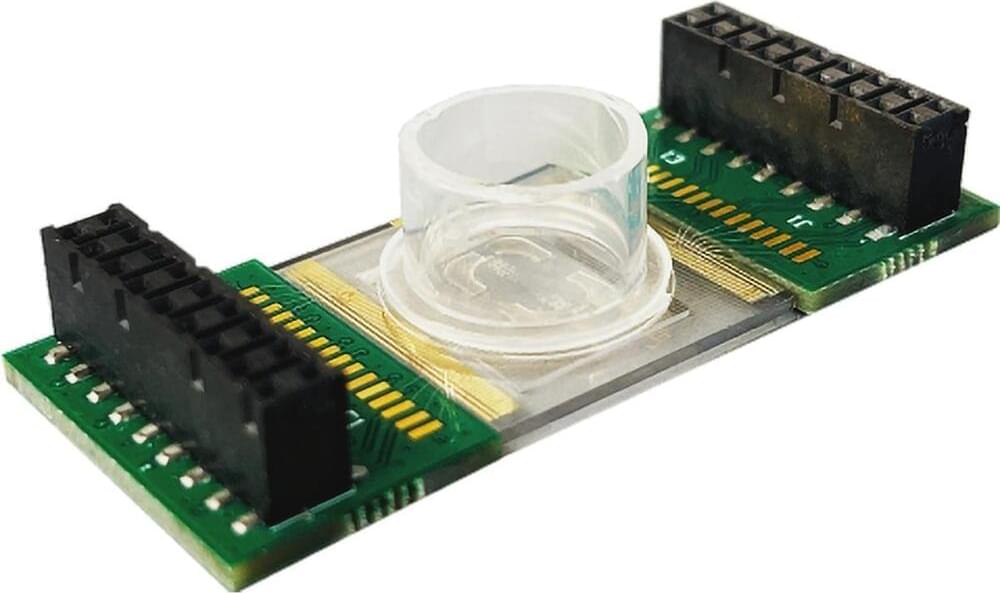Key Points and Summary: NASA’s X-43A hypersonic research aircraft made history in 2004 by reaching Mach 9.64, or 6,363 mph, at an altitude of 110,000 feet.-Powered by a cutting-edge scramjet engine, the X-43A demonstrated the efficiency of air-breathing propulsion for hypersonic flight.-Developed as part of NASA’s “better, faster, cheaper” program, the X-43A was […].
Category: military – Page 21
Study Reveals Why Saber Teeth Evolved Repeatedly in Prehistoric Predators
Saber teeth – the long, sharp, blade-like canines found in extinct predators such as Smilodon – represent one of the most extreme dental adaptations in nature.
They evolved at least five times throughout mammalian history and are a classic example of convergence, which is when similar structures evolve independently in unrelated animal groups.
With no living representatives, scientists have long debated how these predators used their fearsome teeth, and why this extreme tooth shape evolved so often.

Tesla’s Bioweapon Defense Mode Saves Driver Amid Palisades Fire
In a moment of chaos, a Tesla Model Y owner found salvation. His vehicle’s Bioweapon Defense Mode played a crucial role during the Palisades Fire.
The Palisades Fire has consumed over 5,000 acres. NBC News paints a bleak picture, with thousands fleeing their homes.
Tesla owner @JosefInvesting shared his story on social media platform X.
Dr. Marcia McNutt — President, National Academy of Sciences — Shaping Culture & Conduct Of Science
Shaping The Culture & Conduct Of Science — Dr. Marcia McNutt Ph.D. — President, National Academy Of Sciences
Dr. Marcia McNutt, Ph.D. is President of the National Academy of Sciences (https://www.nasonline.org/directory-e…), where she also chairs the National Research Council, the operating arm of the National Academies of Sciences, Engineering, and Medicine, and serves a key role in advising our nation on various important issues pertaining to science, technology, and health.
From 2013 to 2016, Dr. McNutt served as editor-in-chief of the Science journals.
Dr. McNutt is a geophysicist who prior to joining Science, was director of the U.S. Geological Survey (USGS) and science adviser to the United States Secretary of the Interior from from 2009 to 2013. During her tenure, the USGS responded to a number of major disasters, including earthquakes in Haiti, Chile, and Japan, and the Deepwater Horizon oil spill.
Dr. McNutt led a team of government scientists and engineers at BP headquarters in Houston who helped contain the oil and cap the well. She directed the flow rate technical group that estimated the rate of oil discharge during the spill’s active phase. For her contributions, she was awarded the U.S. Coast Guard’s Meritorious Service Medal.

Life in Slow Motion: Can Time Perception and the Speed of Information Processing be Manipulated?
Author: Agnes Chan // Editor: Erin Pallott
I believe most of you have seen that in movies life-threatening events are often depicted in slow motion. Have you ever wondered that it may be true that time is slowed down during certain events? There are several situations in which time was reported to have slowed down or things appeared to happen in slow motion. For example, people often report time slowing down during car crashes or other high-adrenaline situations. These situations are often associated with high levels of fear and danger. If time appeared to be slowing down, it implies that the speed of the internal clock increased during the event. Similar phenomena were reported in military firefights and professional players of high-speed sports reporting their opponents moving in slow motion. It can also be seen in more ordinary events like anxiously waiting for a doctor’s appointment and the passing of time felt slower.

Sleep Revolution: How Magnetic Pulses Could Treat Insomnia
Researchers are developing a groundbreaking, non-medication approach to combat insomnia, particularly in military personnel.
By using a novel brain stimulation technique that targets specific brain networks, the team led by William “Scott” Killgore aims to significantly enhance sleep quality and readiness in service members. Their promising initial results have led to a larger study to further validate and refine this technology.
Military Sleep Challenges

Secret lab developing UK’s first quantum clock
A top-secret lab in the UK is developing the country’s first quantum clock to help the British military boost intelligence and reconnaissance operations, the defense ministry said Thursday.
The clock is so precise that it will lose less than one second over billions of years, “allowing scientists to measure time at an unprecedented scale,” the ministry said in a statement.
“The trialing of this emerging, groundbreaking technology could not only strengthen our operational capability, but also drive progress in industry, bolster our science sector and support high-skilled jobs,” Minister for Defense Procurement Maria Eagle said.

US military taps AI to predict adversaries’ actions before they happen
As DARPA forges ahead with this new initiative, it raises important questions about the balance between enhancing national security and safeguarding individual privacy and civil liberties.
The potential repercussions of deploying sophisticated algorithms to interpret human behavior could lead to ethical dilemmas and increased scrutiny from civil rights advocates.
In summary, DARPA’s Theory of Mind program is positioned at the intersection of technology and national security, focusing on leveraging machine learning to improve decision-making in complex scenarios.

“WWI Fighter Plane Hack” Inspires Breakthrough in Cancer Treatment
Researchers at the University of Massachusetts Amherst have developed an innovative technology inspired by the synchronization mechanism of WWI fighter aircraft, which coordinated machine gun fire with propeller movement. This breakthrough allows precise, real-time control of the pH in a cell’s environment to influence its behavior. Detailed in Nano Letters, the study opens exciting possibilities for developing new cancer and heart disease therapies and advancing the field of tissue engineering.
“Every cell is responsive to pH,” explains Jinglei Ping, associate professor of mechanical and industrial engineering at UMass Amherst and corresponding author of the study. “The behavior and functions of cells are impacted heavily by pH. Some cells lose viability when the pH has a certain level and for some cells, the pH can change their physiological properties.” Previous work has demonstrated that changes of pH as small as 0.1 pH units can have physiologically significant effects on cells.
China: World’s First Military-Proof 5G That Can Connect 10,000 Robots | WION Newspoint | World News
Mobile 5G station for future robot wars.
China has introduced the world’s first mobile 5G base station, designed for battlefield deployment after completing rigorous testing. Developed collaboratively by China Mobile Communications Group and the People’s Liberation Army (PLA), the station delivers high-speed, low-latency, and secure data exchange services. It can support up to 10,000 users within a 3-kilometer (1.8-mile) radius, representing a significant technological advancement in military communication.
#worldnews #china #wion.
About Channel:
WION The World is One News examines global issues with in-depth analysis. We provide much more than the news of the day. Our aim is to empower people to explore their world. With our Global headquarters in New Delhi, we bring you news on the hour, by the hour. We deliver information that is not biased. We are journalists who are neutral to the core and non-partisan when it comes to world politics. People are tired of biased reportage and we stand for a globalized united world. So for us, the World is truly One.